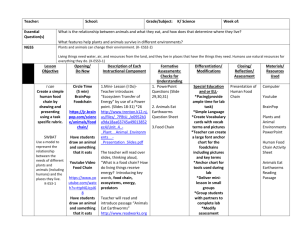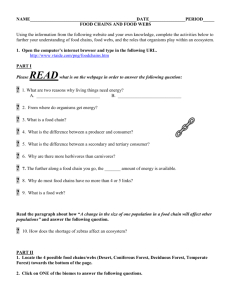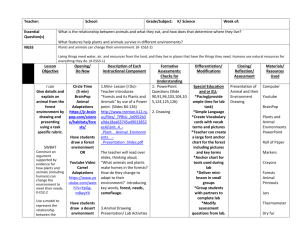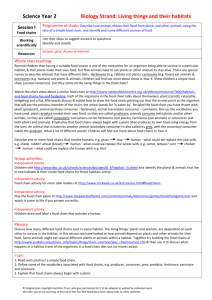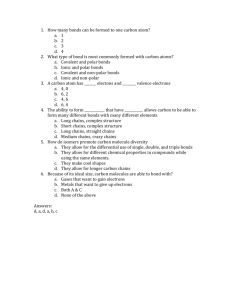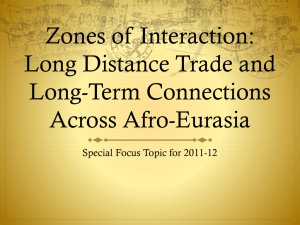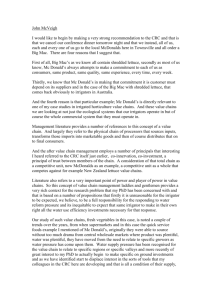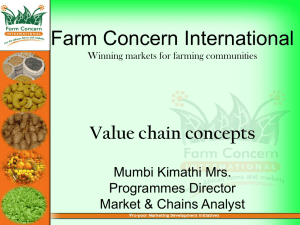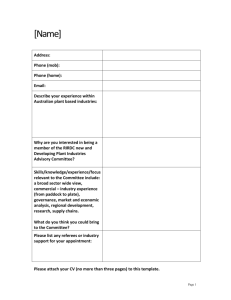Unit 3-Plant Animal Environments 5
advertisement
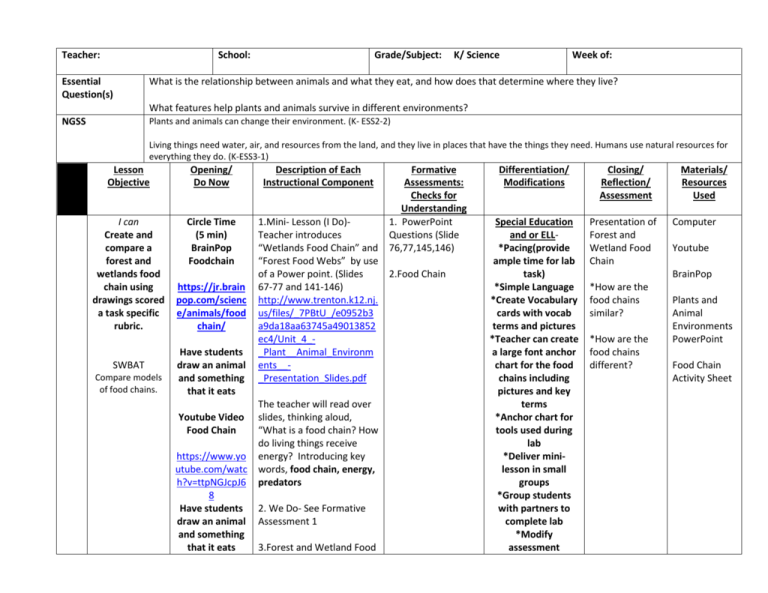
Teacher: School: Essential Question(s) Grade/Subject: K/ Science Week of: What is the relationship between animals and what they eat, and how does that determine where they live? What features help plants and animals survive in different environments? NGSS Plants and animals can change their environment. (K- ESS2-2) Living things need water, air, and resources from the land, and they live in places that have the things they need. Humans use natural resources for everything they do. (K-ESS3-1) Lesson Objective Opening/ Do Now Description of Each Instructional Component I can Create and compare a forest and wetlands food chain using drawings scored a task specific rubric. Circle Time (5 min) BrainPop Foodchain 1.Mini- Lesson (I Do)Teacher introduces “Wetlands Food Chain” and “Forest Food Webs” by use of a Power point. (Slides 67-77 and 141-146) http://www.trenton.k12.nj. us/files/_7PBtU_/e0952b3 a9da18aa63745a49013852 ec4/Unit_4__Plant__Animal_Environm ents___Presentation_Slides.pdf SWBAT Compare models of food chains. https://jr.brain pop.com/scienc e/animals/food chain/ Have students draw an animal and something that it eats Youtube Video Food Chain https://www.yo utube.com/watc h?v=ttpNGJcpJ6 8 Have students draw an animal and something that it eats The teacher will read over slides, thinking aloud, “What is a food chain? How do living things receive energy? Introducing key words, food chain, energy, predators 2. We Do- See Formative Assessment 1 3.Forest and Wetland Food Formative Assessments: Checks for Understanding 1. PowerPoint Questions (Slide 76,77,145,146) 2.Food Chain Differentiation/ Modifications Closing/ Reflection/ Assessment Special Education and or ELL*Pacing(provide ample time for lab task) *Simple Language *Create Vocabulary cards with vocab terms and pictures *Teacher can create a large font anchor chart for the food chains including pictures and key terms *Anchor chart for tools used during lab *Deliver minilesson in small groups *Group students with partners to complete lab *Modify assessment Presentation of Forest and Wetland Food Chain Materials/ Resources Used Computer Youtube BrainPop *How are the food chains similar? *How are the food chains different? Plants and Animal Environments PowerPoint Food Chain Activity Sheet Chain (You Do) Students will draw a forest and wetland food chain. They will then share and compare their food chains with their small groups and the class. *Activity Sheets http://www.trenton.k12.n j.us/files/_7PBtf_/5e5f948 fe81a6c8e3745a49013852 ec4/Unit_4__Plant__Animal_Environm ents__Optional_Activities.pdf questions from lab. *Create a semantic map of foodchains (eat-predators-etc) *Model lab task *Allow oral responses to lab assessment or drawn responses Visual- use printed pictures to create food chain Bodily Kinestheticanimal vs predator act out Musical- Listen to Youtube food chains InterpersonalGroup students together with a partner to create a food chain encouraging students to discuss their observations through prompted questions and turn and talk discussions. IntrapersonalAllow student to create food chain independently with moderate prompting and discussion. Linguistic-Allowed students watch a video stating food chain orders Logical- Have students give logic behind different food chains before creating their own
